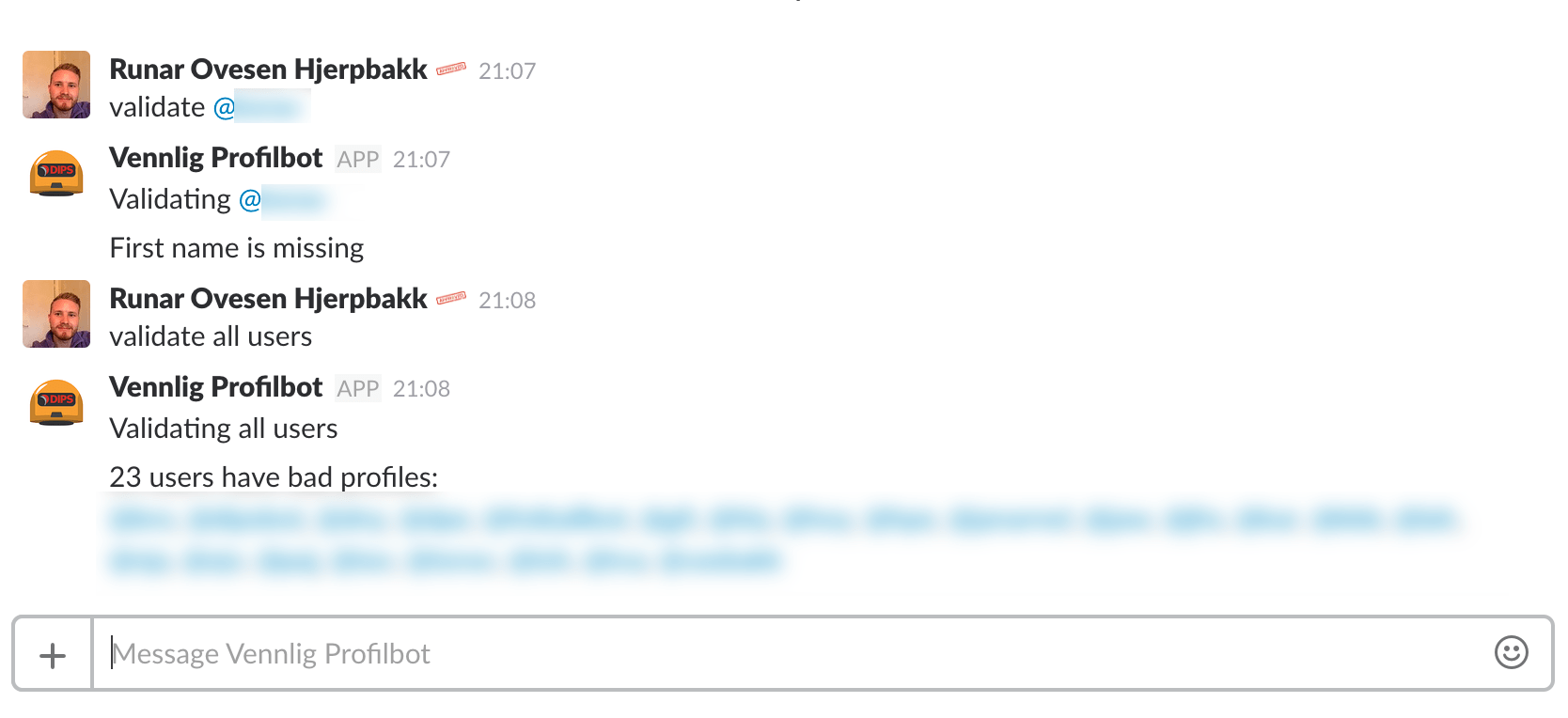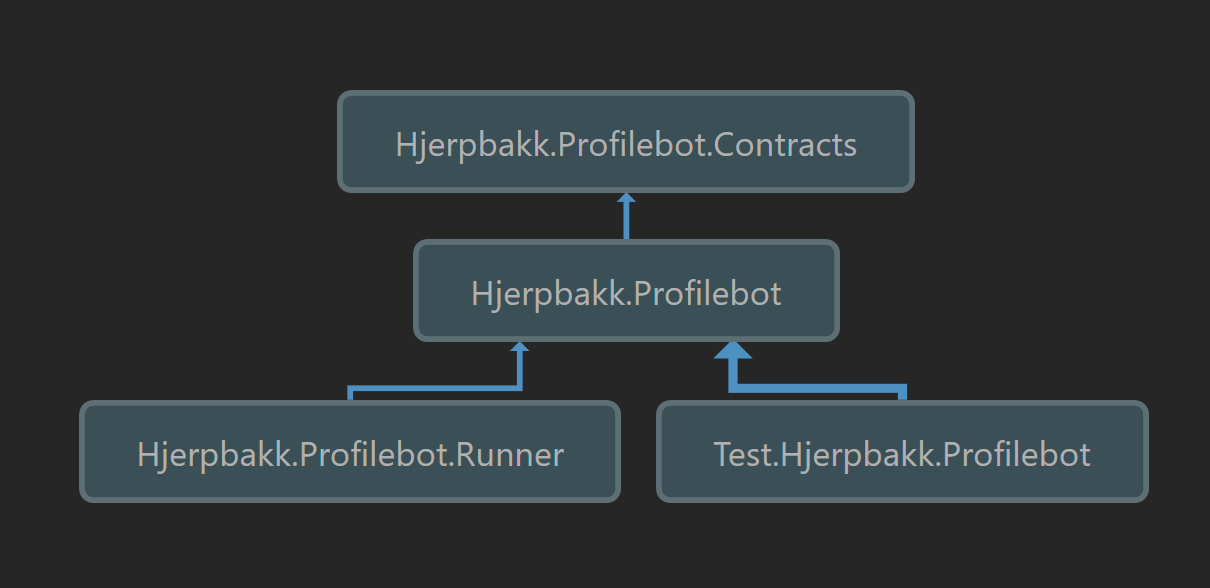Simple Slackbot for validating user profiles.
Profilebot - the profile checking Slackbot for you!
In a large Slack team, it’s important that user profiles are completed enough for the users to recognise each other. Profilebot is a simple bot used for validating Slack user profiles. It is written in C# and it’s easy to extend for all your profile checking needs. It runs out of the box either as a console app (Windows) or a Windows service.

Usage in Slack
Profilebot runs like any other Slackbot. Open a direct message to Profilebot and start talking.
As admin
If you are the admin of Profilebot, the following commands are available for you:
validate all usersnotify all usersvalidate @usernotify @userwhitelist @user
Validating will inform you of the user’s profile status, while notify will also send a direct message to the specific user(s).

As a regular user
As a regular user, anything you say will have the same effect: Profilebot will look at your profile and tell you if any information is missing.
Download & setup
-
Clone the repository:
git clone https://github.com/Sankra/SlackProfilebot.git -
Go to
Hjerpbakk.Profilebot.Runner/Configurationand create a copy ofconfig.default.json. -
Rename the copy to
config.json. -
Go to your Team’s Slack bot integration page.
-
Enter ‘profilebot’ as the Username and click the ‘Add Bot Integration’ button.
-
Copy the generated API token and paste it as your
apiTokeninconfig.json:{ "apiToken": "xxxx-00000000000-xxxxxxxxxxxxxxxxxxxxxxxx", "adminUserId": "" } -
One user must be configured to be Profilebots admin user. This need not be an actual Slack admin, but the id must be a valid user id in the Slack team. Run https://api.slack.com/methods/users.list/test to find the user id you want to use.
-
Copy the user id and paste it as your
adminUserIdinconfig.json:{ "apiToken": "xxxx-00000000000-xxxxxxxxxxxxxxxxxxxxxxxx", "adminUserId": "x0xxx0000" } -
Build and run
Hjerpbakk.Profilebot.sln.
You should now be able to send direct messages to Profilebot in your team’s Slack.
Customize the profile validation
At my company, DIPS AS we use the following validation rules:
- The email used must be a DIPS AS email
- Username must be the same as in all other internal systems
- Both first name and last name must be given
- What I do must tell others what you do
- A profile image must be set and be a picture of a human face
Customising the profile validation is easy, and you have two choices for how to do this.
1. Extend SlackProfileValidator
Open Hjerpbakk.ProfileBot.SlackProfileValidator and edit the ProfileValidationResult ValidateProfile(SlackUser user) method.
2. Inherit from ISlackProfileValidator and create your own validator
- Create a new class and inherit from
ISlackProfileValidator. - In
Hjerpbakk.ProfileBot.Runner.ProfileBotHost, edit theIServiceContainer CompositionRoot(string slackToken, string adminUserId)method. Instead ofserviceContainer.Register<ISlackProfileValidator, SlackProfileValidator>();, register your own validation class.

Running
Thanks to Topshelf, running Profilebot either as a service or a console app is super easy.
To run as a console app, just run Hjerpbakk.Profilebot.Runner.exe. To exit, press CTRL + C.
To install as a service, simply run the following in command prompt:
Hjerpbakk.Profilebot.Runner.exe install
Hjerpbakk.Profilebot.Runner.exe start